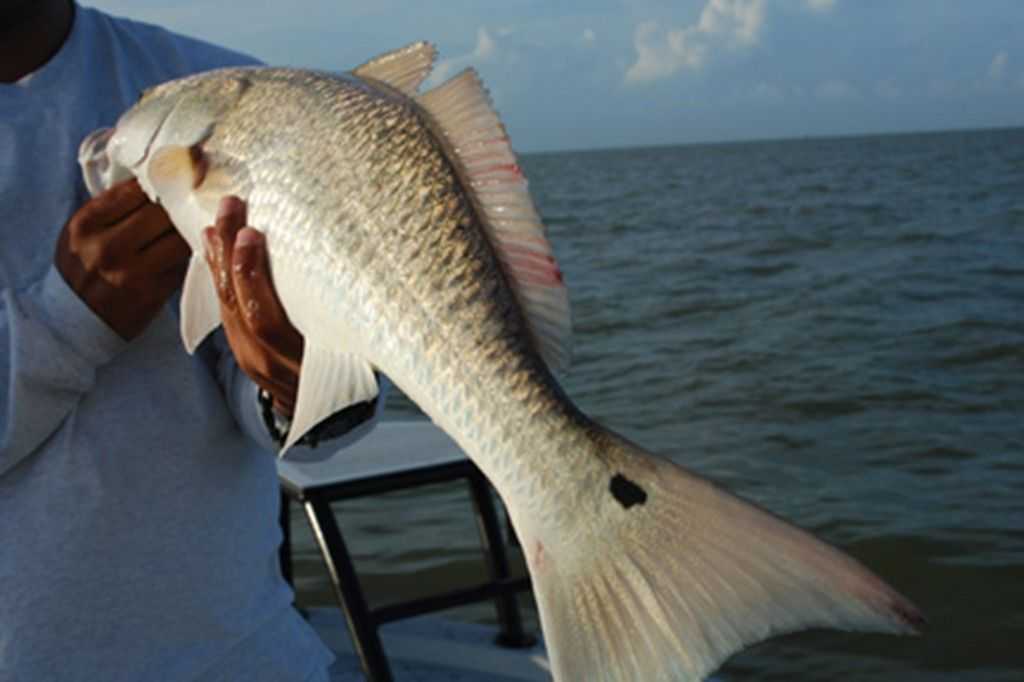The Desperado 22’ chewed up waves like nobody’s business. We can all agree that this spring, in addition to being cooler, has been windier and longer. We set our course for the grass flats and let the Desperado take care of business while cranking tunes on the G-SpotServices.com Rockford Fosgate stereo system.
We were wading a grass flat for redfish looking for flags to tell us where they were going to show up today. Many times we talk about winter and cold-weather wading gear, but warm-water wading gear gets overlooked. Protecting our feet and skin are the highest safety priorities during wet wading.
In the past, it was thought OK to wade with high-top tennis shoes and cotton socks. One or two wades on sand flats with degraded shell will quickly change your mind. Those tiny shell fragments easily rub your skin raw and allow the flesh-eating bacteria vibrio vulnificus an open sore to enter. The Gaurd Socks made by Simms Fishing are 4mm neoprene socks designed to protect your skin in your wading boot.
Choosing a quality well-designed wading boot is also essential to protect your feet and ankles from scrapes and cuts as well as from that redfish hooked with multiple trebles as it runs between your feet. Wear long pants to protect from stinking jelly fish, and wear a quality wicking long-sleeve shirt with a sun collar to keep the sun off your neck and face. Follow these simple summer wade-fishing rules, and you’ll certainly have many more days on the water ahead of you.
As July heats up, so will the redfish action. Increasing water temperatures will increase the metabolism of redfish in the afternoons, causing them to surge the flats and shallow oyster reefs in small schools from 10 to 15 fish ranging in size from the lower to upper end of the slot. They tend to run in packs of similar age.
Find a flat with fish. An area with 20- to 22-inch redfish will likely have you repeating the scenario over and over. Generally, the larger redfish are going to found on main bay and secondary bay shoreline structure nearer deeper water. These are fish that have moved away from the juvenile baitfish of the marsh and are looking for bigger meals, mullet, menhaden and an occasional crab. These will all be upper-slot reds, and in the summer they’ll have ravenous appetites.
Probably the biggest learning factor to this style of fishing can be the speed at which the schools can move. These fish aren’t tailing for shrimp and crabs in the grass. They are aggressive and charge schools of baitfish and white shrimp utilizing their large tails and forceful surges to concentrate their quarry. The angler in search of these fish will have to be ready to be on the move as well. Top lure choices will be plastic baits on a ¼- to 3/8-ounce jig head, as well as ½-ounce gold spoons. The redfish will eat practically anything that gets in their way. The key is hunting them aggressively in the right areas and boat positioning. No one does this better than Capt Brent Juarez of Galveston, Texas.
